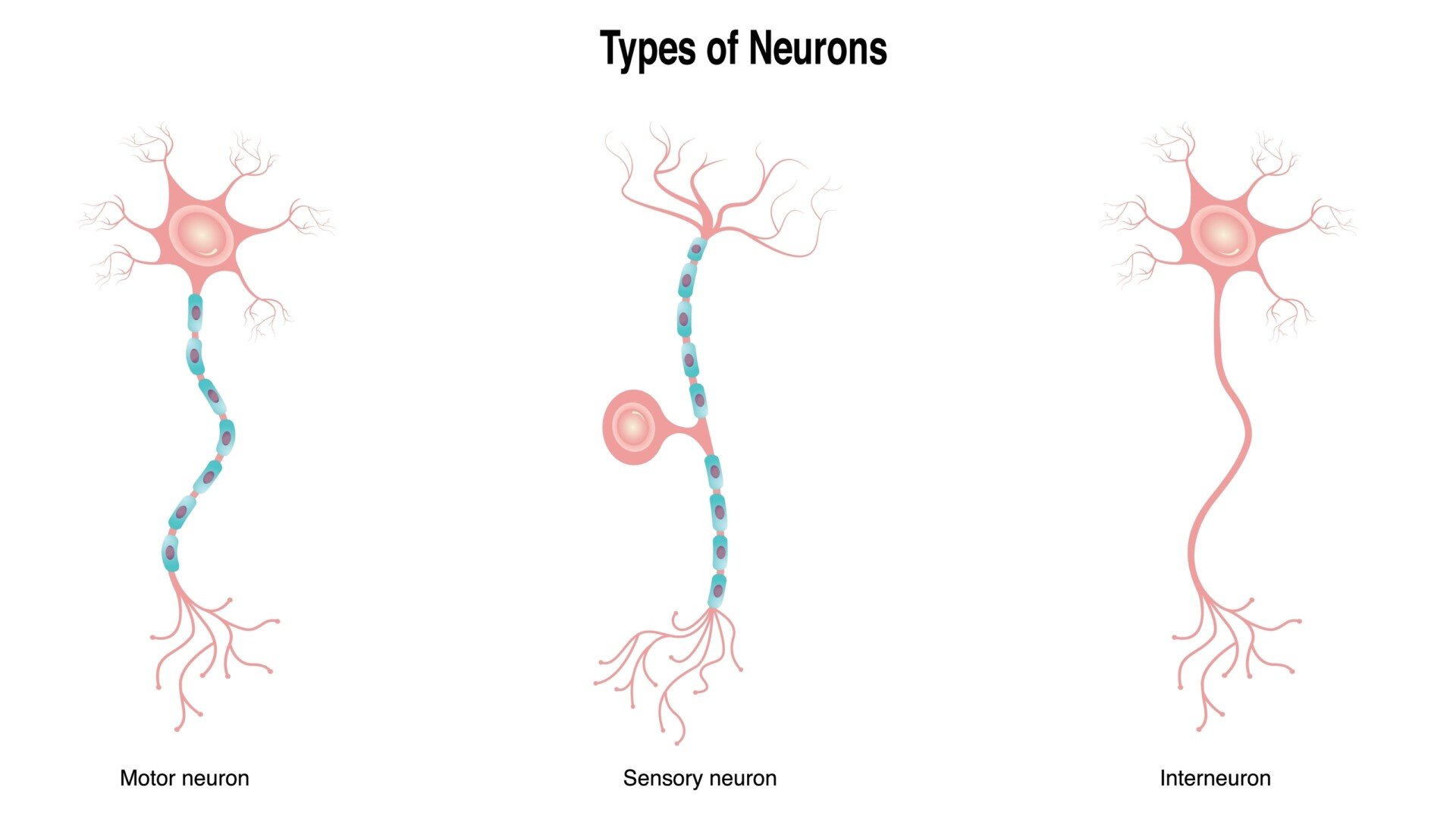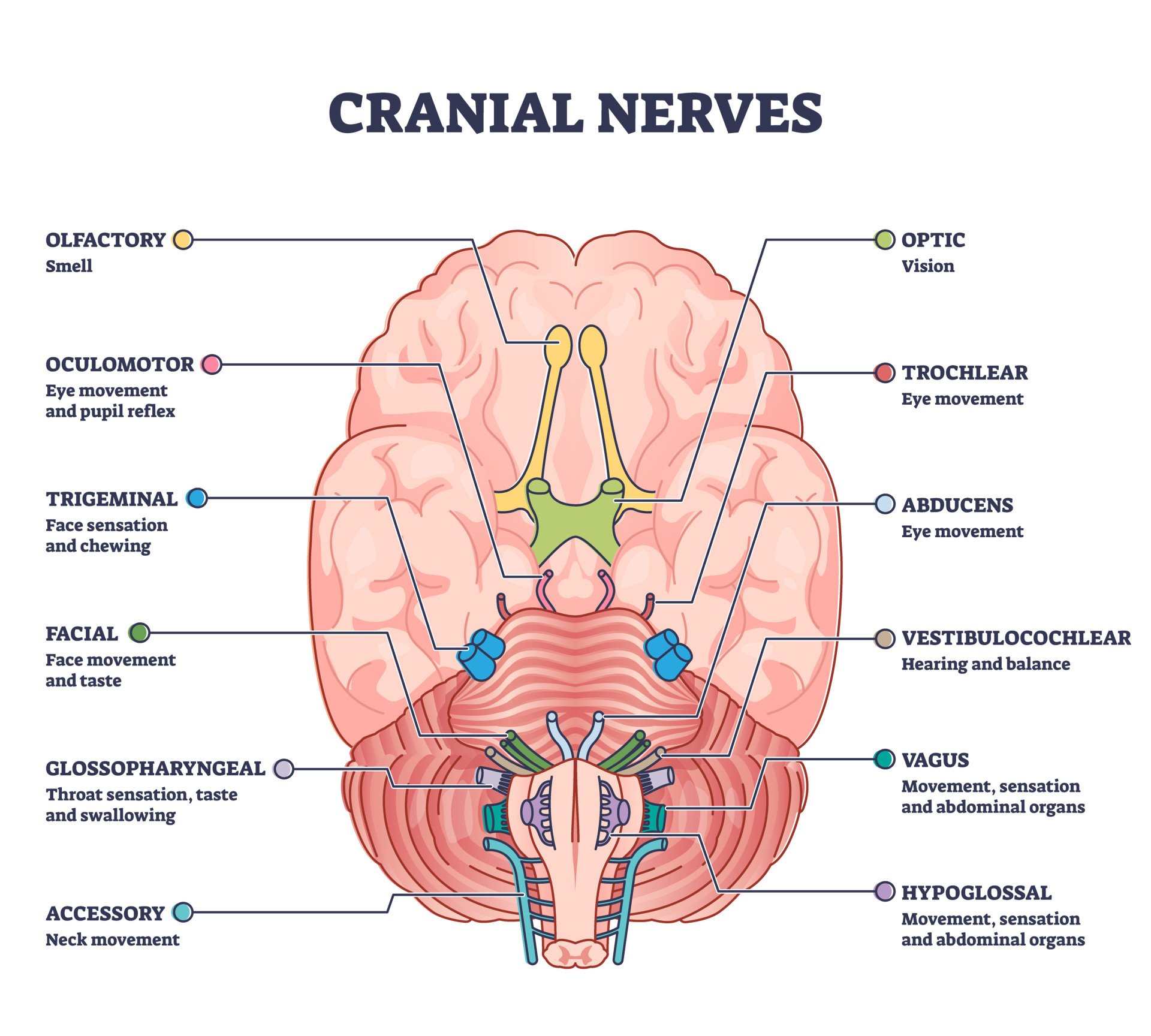The 12 cranial nerves are essential nerve pathways that originate in the brain and serve critical functions in the body, primarily in the head and neck. These nerves are: I. Olfactory (smell), II. Optic (vision), III. Oculomotor (eye movement), IV. Trochlear (eye movement), V. Trigeminal (facial sensation and chewing), VI. Abducent (eye movement), VII. Facial (facial expressions and taste), VIII. Vestibulocochlear (hearing and balance), IX. Glossopharyngeal (taste and swallowing), X. Vagus (c...| Simply Psychology
A neuron is a nerve cell that processes and transmits information through electrical and chemical signals in the nervous system. Neurons consist of a cell body, dendrites (which receive signals), and an axon (which sends signals). Synaptic connections allow communication between neurons, facilitating the relay of information throughout the body.| Simply Psychology





